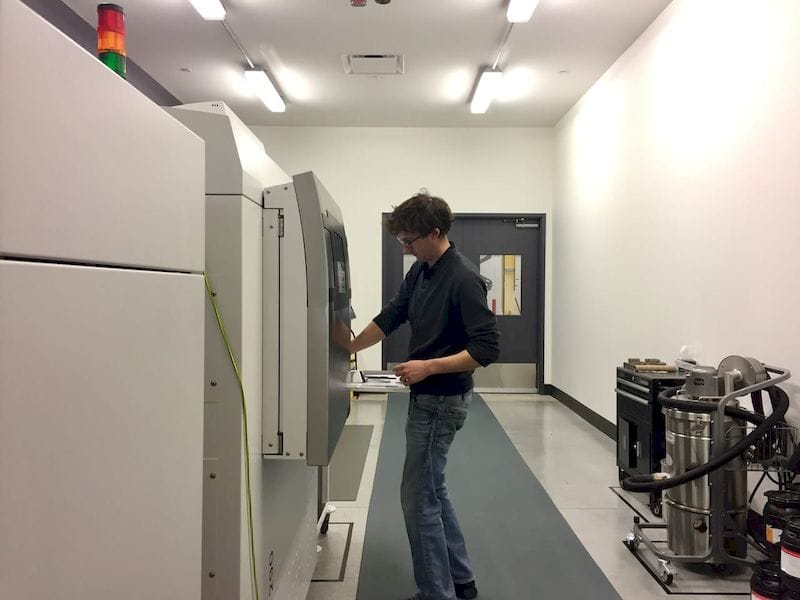
A 3D metal printing service recently quadrupled its capacity.
Canada-based Precision ADM, whom we’ve visited in the past, seems to have obtained several new EOS 3D metal printers to add to its metal printing capacity.
Specifically, they’ve obtained two EOS M 290’s and the giant EOS M 400-4, which includes four independent laser systems that operate simultaneously. This can result in far faster production rates from a single machine.
The addition provides a means for Precision ADM to print in a much wider array of metals. Previously they printed mainly titanium, but some nickel. The problem with nickel is that some 15% of the population is sensitive to that material, and thus if you’re printing medical implants like Precision ADM does, you have to severely separate the nickel operations from any other activity.
That essentially tied down a chunk of their equipment for only one material, making it more challenging to perform prints in many other materials on the remaining equipment. But with more equipment, those constraints are loosened considerably.
Precision ADM says:
Additionally, this acquisition gives Precision ADM’s customers access to the entire EOS set of parameters and materials, opening the door for Precision ADM to begin additively manufacturing parts made from EOS Stainless Steel 17-4 PH IndustryLine, Aluminum, and Nickel Alloy IN625, along with existing capabilities in Titanium Ti64, Cobalt Chrome, Nickel Alloy IN718, and Maraging Steel MS1.
I think this is a natural step for growing 3D metal print services: A smaller set of machine implies a limited set of material availability for the reasons mentioned above.
But their engineering team, who have considerable expertise in executing 3D metal print jobs, should be able to easily adapt to other metals by tweaking their already-successful process.
You may be wondering what I’m saying here, but in fact 3D metal printing is a fantastically complex process that requires extreme analysis and planning to arrive at successful, high quality 3D prints. If this is new to you, then please read this post, where the complexities of 3D metal printing are revealed.
But this raises another question: if a 3D metal printing service is to expand, would they need not only additional equipment but additional engineers to manage the prints?
That seems likely, but obtaining qualified engineers is not as easy as it sounds. I suspect this may provide additional market openings for software designed to assist 3D metal printing operations, such as the products we’ve recently seen from Atlas 3D.
I don’t know which way Precision ADM will head towards: automated or manual expansion, but the good news for the industry is that they are expanding. There are a great many opportunities for business to take advantage of 3D metal printing technologies, but one the limiting factor at the moment seems to be the awareness of the possibilities.
Via Precision ADM

